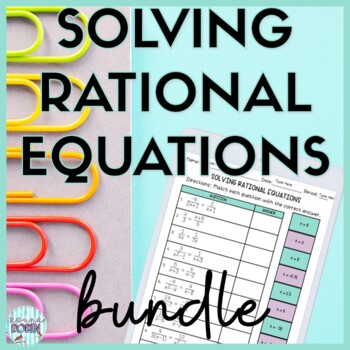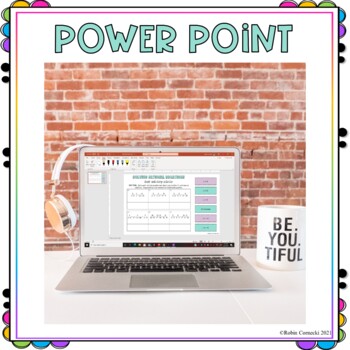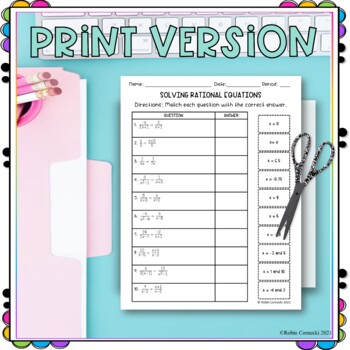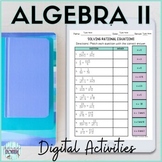Solving Rational Equations Digital Activity Bundle

Products in this Bundle (3)
Also included in
- Are you looking for Digital Resources for your Algebra 2 classroom? Look no further than with this GROWING BUNDLE of Algebra 2 digital activities resources including activities on Simplifying Rational Expressions, Adding and Subtracting Rational Expressions, Multiplying and Dividing Rational ExpressPrice $62.40Original Price $78.00Save $15.60
Description
Give your Algebra students a fun and engaging way to practice their understanding of Solving Rational Equations. This distance learning no prep Solving Rational Equations Drag and Drop Digital Activity Bundle includes 3 different resources that your math students can drag and drop the answers to match the question. Students will practice solving the rational equations by cross-products (proportions) finding the least common denominator of 2 rational expressions, including monomial and binomial denominators. Students will need to solve linear and quadratic equations and use the zero product property.
These resources are perfect for Distance Learning (zero prep) or in the classroom. It can be used with Google or Microsoft. When using with Microsoft, go to File -> Download as a Powerpoint.
You must have a free Google account to access the document.
When you purchase, you will receive a PDF containing the link to this file. You will also receive teacher instructions and an answer key.
⭐ These activities can be used digitally or as a hands-on activity with the provided pdf handouts included. Students will need scissors and a glue stick if you decide to use this as a hands-on activity. ⭐
Don't forget to leave a review to earn credit towards future resources at no extra cost to you!
You may also like:
- Factoring Trinomials Digital Activity
- Factoring Trinomials Digital Drag and Drop Activity
- Adding and Subtracting Rational Expressions Digital Activity
Let's be social!






